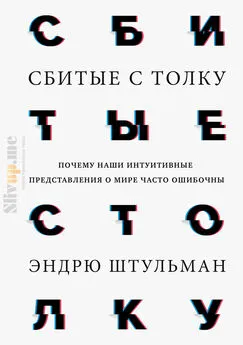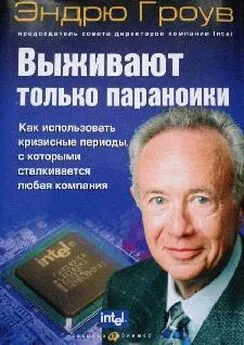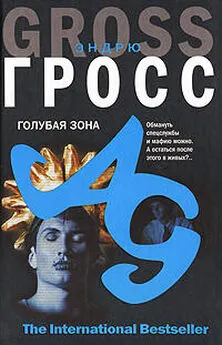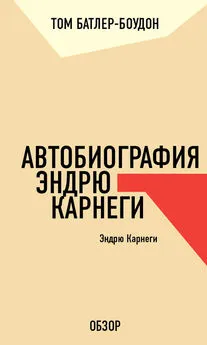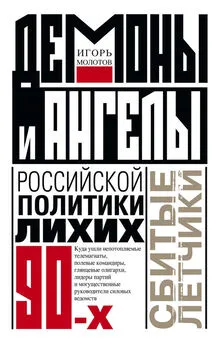Эндрю Штульман - Сбитые с толку
- Название:Сбитые с толку
- Автор:
- Жанр:
- Издательство:Манн, Иванов и Фербер
- Год:2020
- Город:Москва
- ISBN:9785001177616
- Рейтинг:
- Избранное:Добавить в избранное
-
Отзывы:
-
Ваша оценка:
Эндрю Штульман - Сбитые с толку краткое содержание
Сбитые с толку - читать онлайн бесплатно ознакомительный отрывок
Интервал:
Закладка:
Raman, L., and Gelman, S. A. (2005). Children’s understanding of the transmission of genetic disorders and contagious illnesses. Developmental Psychology, 41, 171–182.
Raman, L., and Winer, G. A. (2004). Evidence of more immanent justice responding in adults than children: A challenge to traditional developmental theories. British Journal of Developmental Psychology, 22, 255–274.
Ranney, M. A., and Clark, D. (2016). Climate change conceptual change: Scientific information can transform attitudes. Topics in Cognitive Science, 8, 49–75.
Rappolt-Schlichtmann, G., Tenenbaum, H. R., Koepke, M. F., and Fischer, K. W. (2007). Transient and robust knowledge: Contextual support and the dynamics of children’s reasoning about density. Mind, Brain, and Education, 1, 98–108.
Reiner, M., Slotta, J. D., Chi, M. T. H., and Resnick, L. B. (2000). Naive physics reasoning: A commitment to substance-based conceptions. Cognition and Instruction, 18, 1–34.
Renken, M. D., and Nunez, N. (2010). Evidence for improved conclusion accuracy after reading about rather than conducting a belief-inconsistent simple physics experiment. Applied Cognitive Psychology, 24, 792–811.
Renken, M. D., and Nunez, N. (2013). Computer simulations and clear observations do not guarantee conceptual understanding. Learning and Instruction, 23, 10–23.
Riedel, S. (2005). Edward Jenner and the history of smallpox and vaccination. Baylor University Medical Center Proceedings, 18, 21–25.
Rosenberg, R. D. (2008). Infants’ and young children’s representations of objects and non-cohesive entities: Implications for the core cognition hypothesis (unpublished doctoral dissertation). Cambridge, MA: Harvard University.
Rosenberg, N. A., Pritchard, J. K., Weber, J. L., Cann, H. M., Kidd, K. K., Zhivotovsky, L. A., and Feldman, M. W. (2002). Genetic structure of human populations. Science, 298, 2381–2385.
Rosengren, K. S., Miller, P. J., Gutierrez, I. T., Chow, P. I., Schein, S. S., and Anderson, K. N. (2014). Children’s understanding of death: Toward a contextualized and integrated account. Monographs of the Society for Research in Child Development, 79, 1–162.
Roser, M. E., Fugelsang, J. A., Handy, T. C., Dunbar, K. N., and Gazzaniga, M. S. (2009). Representations of physical plausibility revealed by event-related potentials. NeuroReport, 20, 1081–1086.
Ross, N., Medin, D., Coley, J. D., and Atran, S. (2003). Cultural and experiential differences in the development of folkbiological induction. Cognitive Development, 18, 25–47.
Roughgarden, J. (2004). Evolution’s rainbow: Diversity, gender, and sexuality in nature and people. Berkeley: University of California Press.
Rozenblit, L., and Keil, F. (2002). The misunderstood limits of folk science: An illusion of explanatory depth. Cognitive Science, 26, 521–562.
Rozin, P (1990). Development in the food domain. Developmental Psychology, 26, 555–562.
Rozin, P, Fallon, A., and Augustoni-Ziskind, M. (1985). The child’s conception of food: The development of contamination sensitivity to «disgusting» substances. Developmental Psychology, 21, 1075–1079.
Rozin, P., Millman, L., and Nemeroff, C. (1986). Operation of the laws of sympathetic magic in disgust and other domains. Journal of Personality and Social Psychology, 50, 703–712.
Samarapungavan, A., Vosniadou, S., and Brewer, W. F. (1996). Mental models of the earth, sun, and moon: Indian children’s cosmologies. Cognitive Development, 11, 491–521.
Samarapungavan, A. and Wiers, R. W. (1997). Children’s thoughts on the origin of species: A study of explanatory coherence. Cognitive Science, 21, 147–177.
Sanchez, C. A., and Wiley, J. (2014). The role of dynamic spatial ability in geoscience text comprehension. Learning and Instruction, 31, 33–45.
Sanner, M. A. (2001). People’s feelings and beliefs about receiving transplants of different origins: Questions of life and death, identity, and nature’s border. Clinical Transplantation, 15, 19–27.
Santos, L. R. (2004). Core knowledges: A dissociation between spatiotemporal knowledge and contact-mechanics in a non-human primate? Developmental Science, 7, 167–174.
Santos, L. R., and Hauser, M. D. (2002). A non-human primate’s understanding of solidity: Dissociations between seeing and acting. Developmental Science, 5, F1–F7.
Santos, L. R., Seelig, D., and Hauser, M. D. (2006). Cotton-top tamarins’ (Saguinus oedipus) expectations about occluded objects: A dissociation between looking and reaching tasks. Infancy, 9, 147–171.
Schaller, M., Miller, G. E., Gervais, W. M., Yager, S., and Chen, E. (2010). Mere visual perception of other people’s disease symptoms facilitates a more aggressive immune response. Psychological Science, 21, 649–652.
Schneps, M. H., Sadler, P. M., Woll, S., and Crouse, L. (1988). A private universe. Santa Monica, CA: Pyramid Films. https://www.learner.org/vod/vod_window.html?pid=9.
Scholl, B. J. (2001). Objects and attention: The state of the art. Cognition, 80, 1–46.
Sclater, P. L. (1864). The mammals of Madagascar. Quarterly Journal of Science, 1, 213–219.
Shea, N. A. (2015). Examining the nexus of science communication and science education: A content analysis of genetics news articles. Journal of Research in Science Teaching, 52, 397–409.
Sheppard, K. (2015). Watch a U. S. Senator use a snowball to deny global warming. Mother Jones. https://www.motherjones.com/blue-marble/2015/02/inhofe-snowball-climate-change/.
Shermer, M. (2001). Fox’s Flapdoodle: Tabloid television offers a lesson in uncritical thinking. Scientific American, 284, 37.
Shtulman, A. (2006). Qualitative differences between naive and scientific theories of evolution. Cognitive Psychology, 52, 170–194.
Shtulman, A. (2008). The development of core knowledge domains. In E. M. Anderman and L. Anderman (eds.), Psychology of classroom learning: An encyclopedia, 320–325. Farmington Hills, MI: Thompson Gale.
Shtulman, A. (2013). Epistemic similarities between students’ scientific and supernatural beliefs. Journal of Educational Psychology, 105, 199–212.
Shtulman, A. (2014). Using the history of science to identify conceptual prerequisites to understanding evolution. Poster presented at the 40th meeting of the Society for Philosophy and Psychology, Vancouver, Canada.
Shtulman, A., and Calabi, P. (2012). Cognitive constraints on the understanding and acceptance of evolution. In K. S. Rosengren, S. Brem, E. M. Evans, and G. Sinatra (eds.), Evolution challenges: Integrating research and practice in teaching and learning about evolution, 47–65. Cambridge, UK: Oxford University Press.
Shtulman, A., and Calabi, P. (2013). Tuition vs. intuition: Effects of instruction on naive theories of evolution. Merrill-Palmer Quarterly, 59, 141–167.
Shtulman, A., and Checa, I. (2012). Parent-child conversations about evolution in the context of an interactive museum display. International Electronic Journal of Elementary Education, 5, 27–46.
Shtulman, A., and Harrington, K. (2016). Tensions between science and intuition across the lifespan. Topics in Cognitive Science, 8, 118–137.
Shtulman, A., and Lombrozo, T. (2016). Bundles of contradiction: A coexistence view of conceptual change. In D. Barner and A. Baron (eds.), Core knowledge and conceptual change, 49–67. Oxford, UK: Oxford University Press.
Shtulman, A., and Schulz, L. (2008). The relationship between essentialist beliefs and evolutionary reasoning. Cognitive Science, 32, 1049–1062.
Shtulman, A., and Valcarcel, J. (2012). Scientific knowledge suppresses but does not supplant earlier intuitions. Cognition, 124, 209–215.
Shutts, K., Keen, R., and Spelke, E. S. (2006). Object boundaries influence toddlers’ performance in a search task. Developmental Science, 9, 97–107.
Siegal, M., Butterworth, G., and Newcombe, P. A. (2004). Culture and children’s cosmology. Developmental Science, 7, 308–324.
Siegal, M., Nobes, G., and Panagiotaki, G. (2011). Children’s knowledge of the Earth. Nature Geoscience, 4, 130–132.
Siegal, M., and Share, D. L. (1990). Contamination sensitivity in young children. Developmental Psychology, 26, 455–458.
Siegler, R. S., DeLoache, J. S., and Eisenberg, N. (2010). How children develop. New York: Macmillan.
Skamp, K., Boyes, E., and Stanisstreet, M. (2013). Beliefs and willingness to act about global warming: Where to focus science pedagogy? Science Education, 97, 191–217.
Slaughter, V., and Griffiths, M. (2007). Death understanding and fear of death in young children. Clinical Child Psychology and Psychiatry, 12, 525–535.
Slaughter, V., and Lyons, M. (2003). Learning about life and death in early childhood. Cognitive Psychology, 46, 1–30.
Slotta, J. D., and Chi, M. T. (2006). Helping students understand challenging topics in science through ontology training. Cognition and Instruction, 24, 261–289.
Slotta, J. D., Chi, M. T., and Joram, E. (1995). Assessing students’ misclassifications of physics concepts: An ontological basis for conceptual change. Cognition and Instruction, 13, 373–400.
Smith, C. (2007). Bootstrapping processes in the development of students’ commonsense matter theories: Using analogical mappings, thought experiments, and learning to measure to promote conceptual restructuring. Cognition and Instruction, 25, 337–398.
Smith, C., Carey, S., and Wiser, M. (1985). On differentiation: A case study of the development of the concepts of size, weight, and density. Cognition, 21, 177–237.
Smith, C., Maclin, D., Grosslight, L., and Davis, H. (1997). Teaching for understanding: A comparison of two approaches to teaching students about matter and density. Cognition and Instruction, 15, 317–393.
Smith, C., Solomon, G. E., and Carey, S. (2005). Never getting to zero: Elementary school students’ understanding of the infinite divisibility of number and matter. Cognitive Psychology, 51, 101–140.
Smith, C., and Unger, C. (1997). What’s in dots-per-box? Conceptual bootstrapping with stripped-down visual analogs. Journal of the Learning Sciences, 6, 143–181.
Solomon, G. E. (2002). Birth, kind and naive biology. Developmental Science, 5, 213–218.
Solomon, G. E., and Cassimatis, N. L. (1999). On facts and conceptual systems: young children’s integration of their understandings of germs and contagion. Developmental Psychology, 35, 113–126.
Solomon, G. E., Johnson, S. C., Zaitchik, D., and Carey, S. (1996). Like father, like son: Young children’s understanding of how and why offspring resemble their parents. Child Development, 67, 151–171.
Sousa, P., Atran, S., and Medin, D. (2002). Essentialism and folkbiology: Evidence from Brazil. Journal of Cognition and Culture, 2, 195–223.
Speece, M. W., and Brent, S. B. (1984). Children’s understanding of death: A review of three components of a death concept. Child Development, 55, 1671–1686.
Spelke, E. S. (1994). Initial knowledge: Six suggestions. Cognition, 50, 431–445.
Spelke, E. S. (2005). Sex differences in intrinsic aptitude for mathematics and science? A critical review. American Psychologist, 60, 950–958.
Читать дальшеИнтервал:
Закладка:
